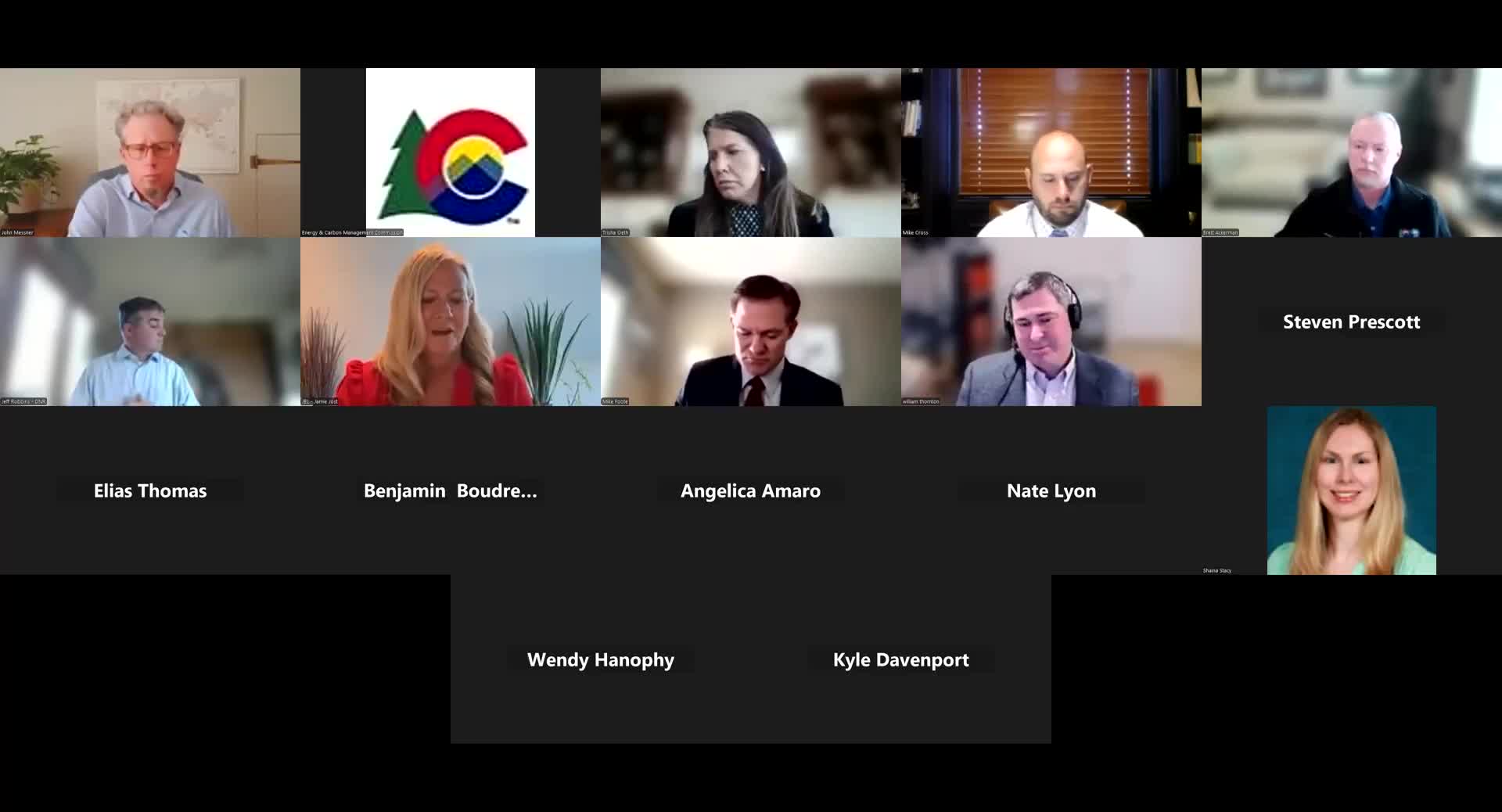Noise experts clash over methods and whether mitigation will protect nearby residents
November 26, 2025 | Energy and Mineral Impact Assistance State Advisory Committee, Governor's Boards and Commissions, Organizations, Executive, Colorado
This article was created by AI summarizing key points discussed. AI makes mistakes, so for full details and context, please refer to the video of the full meeting. Please report any errors so we can fix them. Report an error »

Noise and acoustical evidence was a central technical battleground in the Nov. 25 ECMC hearing.
William Thornton, retained by STAR, said his ambient study characterized the sound actually incident on residents and criticized the operator consultant reports for lacking constituent inputs required for reproducible modeling. Thornton told commissioners he reached three principal conclusions: operators must provide complete constituent data; moving pads further from residents predictably reduces incident noise; and objectively quieter equipment lowers community exposure.
Crestone's rebuttal witnesses, including Vince Ginter (Urban Solutions) and other acoustical consultants, disputed Thornton's characterization. Ginter said Urban's noise mitigation plan complied with ECMC rule 4.23 and that sound power octave‑band data are typically included in site‑specific impact assessments rather than the mitigation plan summary. Ginter cited topographic isolation (an 85–90 foot hill) and a planned 32‑foot perimeter sound wall to argue that predicted DBA and DBC levels meet or exceed the code's protections. He also asserted that Urban's modeling, if reproduced with the underlying data, shows operations would be substantially quieter than allowable limits.
The record shows disagreement on disclosure (whether octave‑band sound power and modeling inputs should have been included in the public mitigation plan) and on how audible or perceptible small decibel changes (1–2 dB) are when tonal or low‑frequency content is present. Thornton cautioned that even a small nominal increase can be perceptible if tonal; Urban Solutions emphasized regulatory thresholds and monitoring plans that it contends are aligned with public‑health protections.
Commissioners pressed both sides on reproduction of modeling inputs, the role of topography and the limits of sound walls at greater distances. The commission has the competing technical claims on record as it continues deliberations.
William Thornton, retained by STAR, said his ambient study characterized the sound actually incident on residents and criticized the operator consultant reports for lacking constituent inputs required for reproducible modeling. Thornton told commissioners he reached three principal conclusions: operators must provide complete constituent data; moving pads further from residents predictably reduces incident noise; and objectively quieter equipment lowers community exposure.
Crestone's rebuttal witnesses, including Vince Ginter (Urban Solutions) and other acoustical consultants, disputed Thornton's characterization. Ginter said Urban's noise mitigation plan complied with ECMC rule 4.23 and that sound power octave‑band data are typically included in site‑specific impact assessments rather than the mitigation plan summary. Ginter cited topographic isolation (an 85–90 foot hill) and a planned 32‑foot perimeter sound wall to argue that predicted DBA and DBC levels meet or exceed the code's protections. He also asserted that Urban's modeling, if reproduced with the underlying data, shows operations would be substantially quieter than allowable limits.
The record shows disagreement on disclosure (whether octave‑band sound power and modeling inputs should have been included in the public mitigation plan) and on how audible or perceptible small decibel changes (1–2 dB) are when tonal or low‑frequency content is present. Thornton cautioned that even a small nominal increase can be perceptible if tonal; Urban Solutions emphasized regulatory thresholds and monitoring plans that it contends are aligned with public‑health protections.
Commissioners pressed both sides on reproduction of modeling inputs, the role of topography and the limits of sound walls at greater distances. The commission has the competing technical claims on record as it continues deliberations.
View the Full Meeting & All Its Details
This article offers just a summary. Unlock complete video, transcripts, and insights as a Founder Member.
✓
Watch full, unedited meeting videos
✓
Search every word spoken in unlimited transcripts
✓
AI summaries & real-time alerts (all government levels)
✓
Permanent access to expanding government content
30-day money-back guarantee

